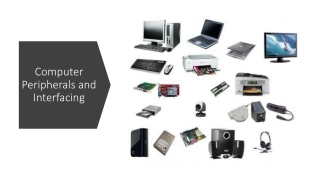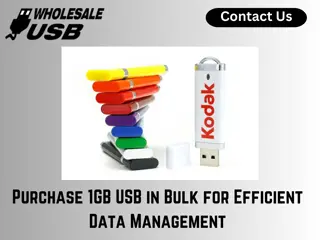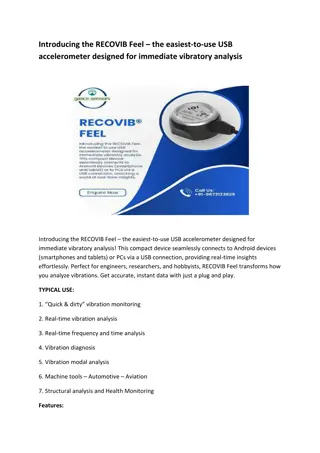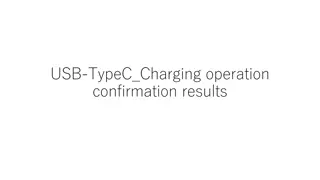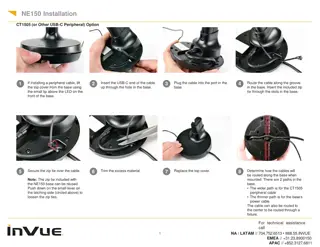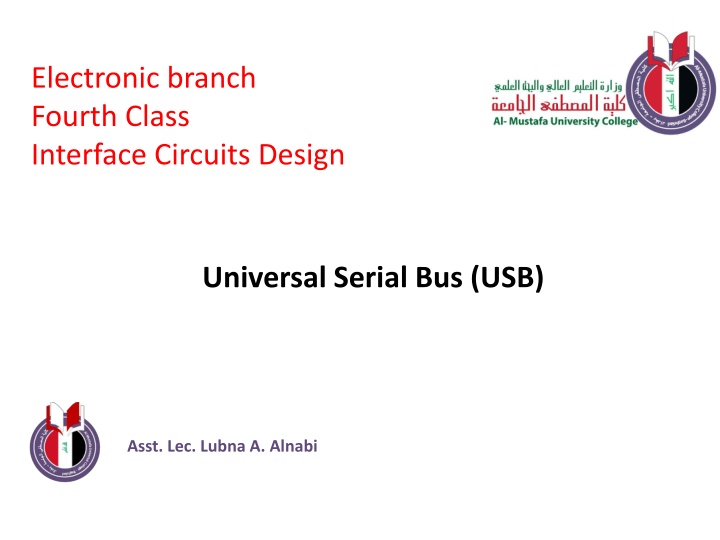
Universal Serial Bus (USB) Technology and Applications
Learn about the Universal Serial Bus (USB) technology, its various versions, connectors, and applications in connecting devices to computers. USB is a versatile and widely supported technology that enables hot-swappable and plug-and-play connectivity, making it convenient for users to connect devices such as digital cameras, printers, scanners, and external hard drives to their computers. Discover the different speeds and capabilities of USB versions like USB 1.0, USB 2.0, USB 3.0, and USB 3.1, along with the design possibilities for creating circuits to interface USB with sensors like the LM35 temperature sensor.
Download Presentation

Please find below an Image/Link to download the presentation.
The content on the website is provided AS IS for your information and personal use only. It may not be sold, licensed, or shared on other websites without obtaining consent from the author. If you encounter any issues during the download, it is possible that the publisher has removed the file from their server.
You are allowed to download the files provided on this website for personal or commercial use, subject to the condition that they are used lawfully. All files are the property of their respective owners.
The content on the website is provided AS IS for your information and personal use only. It may not be sold, licensed, or shared on other websites without obtaining consent from the author.
E N D
Presentation Transcript
Electronic branch Fourth Class Interface Circuits Design Universal Serial Bus (USB) Asst. Lec. Lubna A. Alnabi
Universal Serial Bus (USB) USB (Universal Serial Bus) is the most popular connection used to connect a computer to devices such as digital cameras, printers, scanners, and external hard drives. USB is a cross-platform technology that is supported by most of the major operating systems. On Windows, it can be used with Windows 98 and higher. USB is a hot-swappable technology, meaning that USB devices can be added and removed without having to restart the computer. USB is also plug and play . When you connect a USB device to your PC, Windows should detect the device and even install the drivers needed to use it.
Universal Serial Bus (USB) There are many versions of USB. The original version of USB, USB 1.0, only supported speeds of up to 11 Mbps and was used mostly to connect keyboards and mice. The second version of USB, which is known as USB 2.0, supports speeds of up to 480 Mbps. The third version of USB, which is known as USB 3.0, supports speeds of 5 Gbps. The last version of USB, which is known as USB 3.1, supports speeds of up 10 Gbps. Cable lengths are limited to 5 meters (for the full-speed interface). Maximum power is given by 100mA x 5V.
Universal Serial Bus (USB) USB Connector: It has 4 pins: 5 v -Data +Data Ground
Universal Serial Bus (USB) 1- Design a cct to read the temperature from an LM35 sensor to the PC using the USB port.


